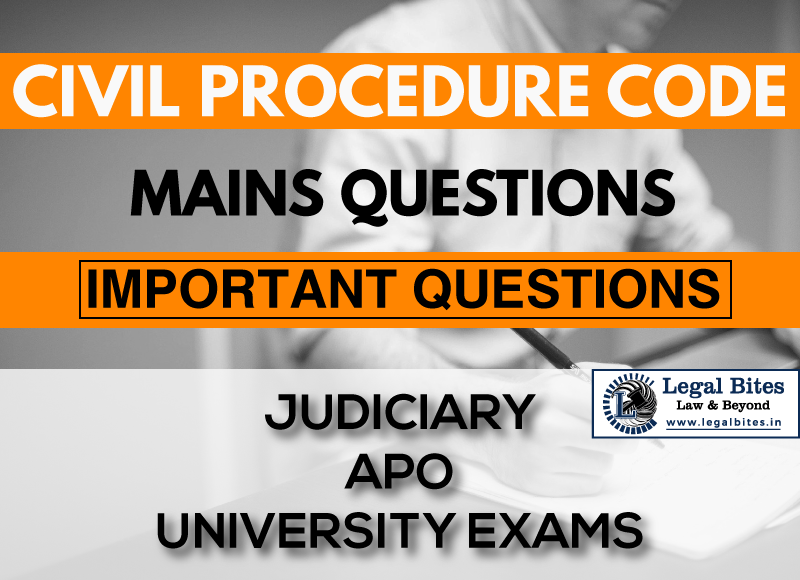Define the terms Movable Property and Order
Find the answer to the mains question only on Legal Bites.

Question: Define the terms Movable Property and Order. Find the answer to the mains question only on Legal Bites. [Define the terms Movable Property and Order.] Answer I. Movable Property Movable Property usually refers to things that can be moved from one place to another like vehicles, bags, etc. Whereas on the other hand, immovable property is an immovable object. For ex- land, house, etc. According to Section 2(13) of CPC, 1908, “movable property” includes growing crops. For...
Question: Define the terms Movable Property and Order.
Find the answer to the mains question only on Legal Bites. [Define the terms Movable Property and Order.]
Answer
I. Movable Property
Movable Property usually refers to things that can be moved from one place to another like vehicles, bags, etc. Whereas on the other hand, immovable property is an immovable object. For ex- land, house, etc.
According to Section 2(13) of CPC, 1908, “movable property” includes growing crops. For ex- Banyan trees, if cut and sold for timber purposes, are considered as movable property. A contract for cutting the bamboos and collection of tobacco leaves comes under the movable property. Movable property has no need to be registered under the Indian Registration Act, 1908. It is purely voluntary.
II. Order
According to Section 2(14) of CPC, 1908, “order” means the formal expression of any decision of a Civil Court which is not a decree. The adjudication of a Court that is not a decree is an order.
Essential elements of orders are as follows-
- It should be a formal expression of any decision.
- The formal expression should not be a decree.
- The decision is to be pronounced by a Civil Court.
As a general rule, an order of a court of law is founded on objective considerations, and as such the judicial order must contain a discussion of the question at issue and the reasons which prevailed with the court which led to the passing of the order.
Orders are of two kinds:
1. Appealable orders – Orders against which an appeal lies.
2. Non-appealable orders – Orders against which no appeal lies.
Similarly, there are two classes of orders:
1. Final orders – An order that disposes of all of the claims and adjudicates the rights and liabilities of all the parties in the suit.
2. Interlocutory orders – Interlocutory orders only settle an intervening matter relating to the cause. Such orders are made to secure some end and purpose necessary which are essential for the progress of the case. In simple terms, a temporary order issued during the course of litigation is called Interlocutory order. Also known as the Interim order, is the decision of the court which does not deal with the finality of the case but rather settles a subordinate issue relating to the main subject matter.
Important Mains Questions Series for Judiciary, APO & University Exams
- CPC Mains Questions Series: Important Questions Part – I of X
- CPC Mains Questions Series: Important Questions Part – II of X
- CPC Mains Questions Series: Important Questions Part – III of X
- CPC Mains Questions Series: Important Questions Part – IV of X
- CPC Mains Questions Series: Important Questions Part – V of X
- CPC Mains Questions Series: Important Questions Part – VI of X
- CPC Mains Questions Series: Important Questions Part – VII of X
- CPC Mains Questions Series: Important Questions Part – VIII of X
- CPC Mains Questions Series: Important Questions Part – IX of X
- CPC Mains Questions Series: Important Questions Part – X of X
Admin Legal Bites
Legal Bites Study Materials correspond to what is taught in law schools and what is tested in competitive exams. It pledges to offer a competitive advantage, prepare for tests, and save a lot of money.

